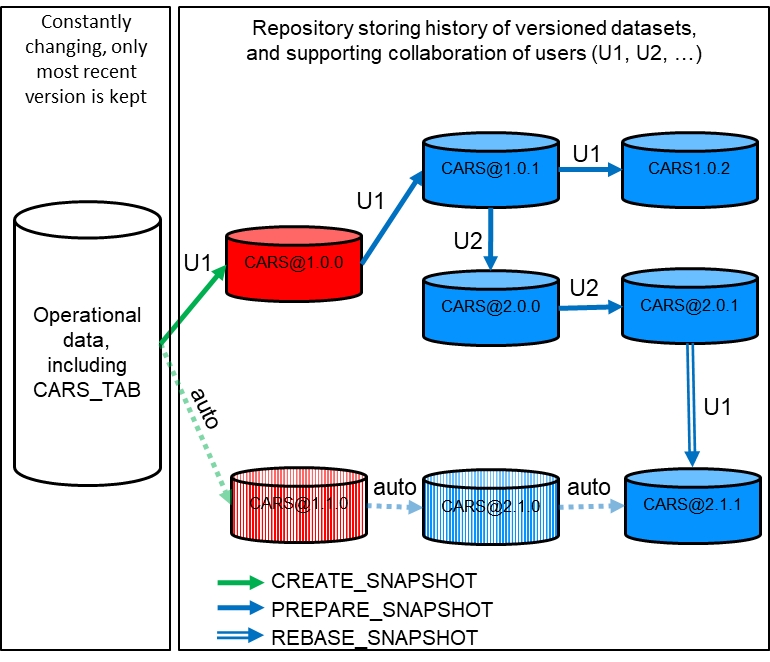文章目录
- 一、外键约束
- 二、多表查询
- 1、连接查询
- (1)笛卡尔积查询
- (2)内连接
- (3)外连接
- 2、复合条件连接查询
- 3、子查询
- 三、索引
一、外键约束
外键所依赖的表为主表,字段绑定外键的表为子表。
主表:
CREATE TABLE ClassCharger(id TINYINT PRIMARY KEY auto_increment,name VARCHAR (20),age INT ,is_marriged tinyint(1)
);
注:如果ClassCharger在s3库中,而当前库不在s3中,可以将表名写为:s3.ClassCharger
INSERT INTO ClassCharger (name,age,is_marriged) VALUES ("冰冰",12,0),("丹丹",14,0),("歪歪",22,0),("姗姗",20,0),("小雨",21,0);
子表:
创建表时添加外键:
[CONSTRAINT 外键名]FOREIGN KEY (charger_id) REFERENCES ClassCharger(id)
注:作为外键一定要和关联主键的数据类型保持一致。如果不写CONSTRAINT 外键名,则会自动获取一个外键名。
CREATE TABLE Student(id INT PRIMARY KEY auto_increment,name VARCHAR (20),charger_id TINYINT,CONSTRAINT abc FOREIGN KEY (charger_id) REFERENCES ClassCharger(id)
) ENGINE=INNODB;
INSERT INTO Student1(name,charger_id) VALUES ("alvin1",2),("alvin2",4),("alvin3",1),("alvin4",3),("alvin5",1),("alvin6",3),("alvin7",2);
由于外键的作用,下列两句sql都执行不成功。
delete from ClassCharger where id=1;
insert into student (name,charger_id) values('haha',10);
创建表后,也可以添加、删除外键:
ALTER TABLE student ADD CONSTRAINT abcFOREIGN KEY (charger_id)REFERENCES classcharger(id);
ALTER TABLE student DROP FOREIGN KEY abc;
INNODB支持的ON语句:
外键约束对子表的含义: 如果在父表中找不到候选键,则不允许在子表上进行insert/update
外键约束对父表的含义:在父表上进行update/delete,在子表中有对应匹配行的候选键时,父表的行为取决于在定义子表的外键时指定的 on update/on delete子句。
①cascade方式: 在父表上update/delete记录时,同步update/delete掉子表的匹配记录。
外键的级联删除:如果父表中的记录被删除,则子表中对应的记录自动被删除
ALTER TABLE student ADD CONSTRAINT abcFOREIGN KEY(charger_id)REFERENCES classcharger(id)ON DELETE CASCADE;
②set null方式: 在父表上update/delete记录时,将子表上匹配记录的列设为null。
注:子表的外键列不能为not nul
ALTER TABLE student ADD CONSTRAINT abcFOREIGN KEY(charger_id)REFERENCES classcharger(id)ON DELETE SET NULL;
③Restrict方式 ④No action方式:这两种方式用的比较少,了解即可,都是拒绝对父表进行删除更新操作。
二、多表查询
1、连接查询
先准备两张表:
创建表employee,并插入记录
create table employee(emp_id int auto_increment primary key not null,emp_name varchar(50),age int,dept_id int
);
insert into employee(emp_name,age,dept_id) values('A',19,200),('B',26,201),('C',30,201),('D',24,202),('E',20,200),('F',38,204);
创建表department,并插入记录
create table department(dept_id int,dept_name varchar(100)
);
insert into department values(200,'人事部'),(201,'技术部'),(202,'销售部'),(203,'财政部');
(1)笛卡尔积查询
SELECT * FROM employee,department;
(2)内连接
A inner join B:找出A表和B表中匹配on条件的所有记录。
select * from employee,department where employee.dept_id = department.dept_id;
或
select * from employee inner join department on employee.dept_id = department.dept_id;
注:这里 inner join 前后两张表的顺序颠倒,查询结果一样。
(3)外连接
①左外连接
A left join B:在内连接的基础上,增加A表有B表没有的结果。
select * from employee left join department on employee.dept_id = department.dept_id;
②右外连接
A right join B:在内连接的基础上,增加B表有A表没有的结果。
select * from employee RIGHT JOIN department on employee.dept_id = department.dept_id;
③全外连接
可以理解为左连接和右连接的并集。
mysql不支持full join语句,可以使用union语句来实现全外连接。
select * from employee RIGHT JOIN department on employee.dept_id = department.dept_id
UNION
select * from employee LEFT JOIN department on employee.dept_id = department.dept_id;
注意:union与union all的区别:union会去掉相同的纪录
2、复合条件连接查询
查询员工年龄大于等于25岁的部门:
SELECT DISTINCT department.dept_nameFROM employee,departmentWHERE employee.dept_id = department.dept_idAND age>25;
3、子查询
子查询是将一个查询语句嵌套在另一个查询语句中。
内层查询语句的查询结果,可以为外层查询语句提供查询条件。
子查询中可以包含:IN、NOT IN、ANY、ALL、EXISTS 和 NOT EXISTS等关键字。
还可以包含比较运算符:= 、 !=、> 、<等。
(1)查询employee表,但dept_id必须在department表中出现过
select * from employeewhere dept_id IN(select dept_id from department);
(2)复制employee到AA
create table AA (select * from employee);
注:这里只复制表字段和记录,不复制约束条件。
(3)带EXISTS关键字的子查询
EXISTS关字键字表示存在,返回Ture或False。
当返回Ture时,外层查询语句将进行查询;当返回值为False时,外层查询语句不进行查询。
select * from employeeWHERE EXISTS(SELECT dept_name from department where dept_id=205);
这里EXISTS返回False,外层select查询结果为Empty set。
三、索引
索引在Mysql中也叫做“键”,是存储引擎用于快速找到记录的一种数据结构。索引相当于字典的目录的页码,可以大幅提高查询速度。创建与维护索引会消耗很多时间与磁盘空间,但查询速度大大提高。
注:primary key主键也是一种索引。
unique是唯一索引。设置字段约束条件为unique时,会自动加一个unique索引。
create table test(id int primary key auto_increment,name varchar(20),salary int DEFAULT 1000
);insert into test(name) values("111"),("222"),("333"),("444");alter table test modify name varchar(20) unique;
创建表时,创建索引语法:
create table 表名 (字段名1 数据类型 [约束条件],字段名2 数据类型 [约束条件],...[unique | fulltext | spatial] index | key[索引名] (字段名[(长度)] [asc | desc])
);
创建索引时,如果不指定索引名,则会以字段名为索引名。
创建普通索引示例:
create table test1(id int,name varchar(20),index index_name (name) -- 关键字index换成key,效果相同
);
创建全文索引示例:
全文索引适合给大文本做索引。
create table test2(id int,name varchar(20),resume varchar(100),fulltext index index_name (resume)
);
创建多列索引示例:
create table test3(id int,name varchar(20),resume varchar(100),INDEX index_name_resume (name, resume)
);
在已存在表上创建索引:
方法一:
create [unique | fulltext | spatial] index 索引名on 表名 (字段名[(长度)] [asc | desc]);
方法二:
alter table 表名 add [unique | fulltext | spatial] index 索引名 (字段名[(长度)] [asc | desc])
示例:
create index index_name on test4 (name);
alter table test4 add unique index index_name (name);
删除索引:
语法: drop index 索引名 on 表名;
示例:
drop index index_name on test4;



















